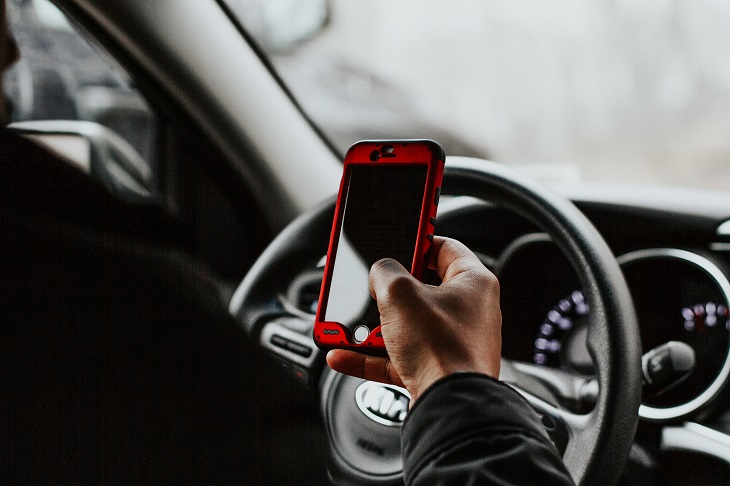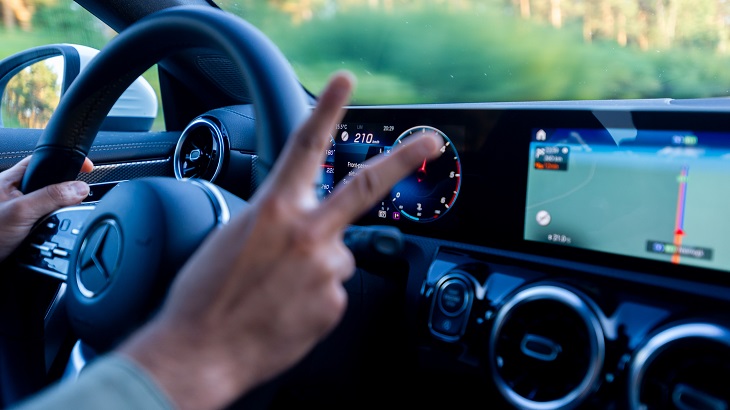Most drivers have heard the term defensive driving. But what exactly does it mean? And why is defensive driving for disabled drivers so important?
Defensive driving is a series of actions and behaviors that will help you stay safe behind the wheel. As a driver, you can only control your own actions, not those of other drivers, so defensive driving techniques help you stay safe on the road, even if another driver makes a mistake.
Done correctly, defensive driving will help you avoid accidents by spotting hazards in advance and avoiding dangerous situations. It’s particularly important for disabled drivers who might have special physical or mental considerations that make driving more challenging.
If you want to stay safe and prepared while on the road, here are a few defensive driving techniques that all disabled drivers should know.
1. Follow the three-second rule
The three-second rule is taught to new drivers as a way of preventing collisions. It states that you should keep at least three seconds of time between yourself and the car ahead of you, so if they brake suddenly, you’ll have time to react.
However, for disabled drivers who might have slower response times, consider following a five- or six-second rule. If you know it will take you longer to react to something on the road, it’s completely OK to keep a wider berth between yourself and other drivers.
Don’t worry about cars behind you – they can pass you if they choose to do so. You can also yield or pull over to let other drivers pass you if they’re driving aggressively.
2. Drive at times of the day that are safest for you
What are some defensive driving skills specific to disabled drivers? One of our top recommendations is to only drive at times of the day when you’re most focused and alert, as this will help you stay safe.
For example, if you know you feel tired at certain times of the day when you take your medication, plan your trips so you don’t need to be on the road during these times.

3. Minimize distractions
So, what should every driver know about defensive driving? If it’s one thing, it’s this: minimize distractions! Distracted driving is the leading cause of crashes in the US, so never take your eyes off the road.
If you need to check your phone, make a call, or change the radio, always pull over somewhere safe to do so. Avoid eating while driving, too – if your disability means you need to eat frequently for your blood sugar, always do so when the car is parked.
Taking your eyes off the road for a split second is all it takes to cause a collision, so don’t take the risk.
4. Scan the road constantly
To drive defensively, you should always be scanning the road. Keep your eyes on what’s immediately ahead of you, but also what’s ahead on the horizon, so you’re completely aware of your surroundings. This way, it’s easier to make decisions and react to upcoming problems, such as a traffic jam.
Keep in mind that scanning the road and paying close attention can be mentally tiring, especially for those with a disability. On long drives, take plenty of rest breaks so you’re fresh, or share the driving with someone else.
5. Use your mirrors
When you get in the car, always double-check that your mirrors are positioned correctly. If someone else drove the car before you, you’ll probably need to adjust them to your height.
As you drive, check your mirrors regularly, especially before you make a turn or switch lanes – mirrors are one of your most important tools for staying safe.

6. Plan your route in advance
For some drivers, especially those with learning disabilities, navigating to a new place can be confusing and overwhelming. Reading road signs while driving, looking for the right exit, and focusing on the road can be a lot to do at once, especially if you’re trying to navigate as well.
If you’re someone who struggles with unfamiliar environments, it’s smart to always plan your route in advance. Review your directions and use a GPS to help you navigate as you drive. This will help you stay calm and focused on your driving, without needing to stress about where you’re going. If you do get lost and feel panicked, pull over and take a few deep breaths – it can be unsafe to drive while you’re feeling frustrated or stressed.
If you’re looking for more safe driving tips, reach out to your local driving school to learn more. Wondering “Why would someone take a defensive driving course?” It can be a great way to refresh your skills, especially if you’re out of practice.
Defensive driving is one of the best ways for drivers with disabilities to protect themselves. However, disabled drivers also have an easier time once they’ve approved for handicapped permits, which makes parking much more convenient. If you’re not sure if you qualify for one, you can ask a doctor today – a quick and easy way to make life on the road easier and safer.
Featured image by Brauilo Corona on Unsplash







